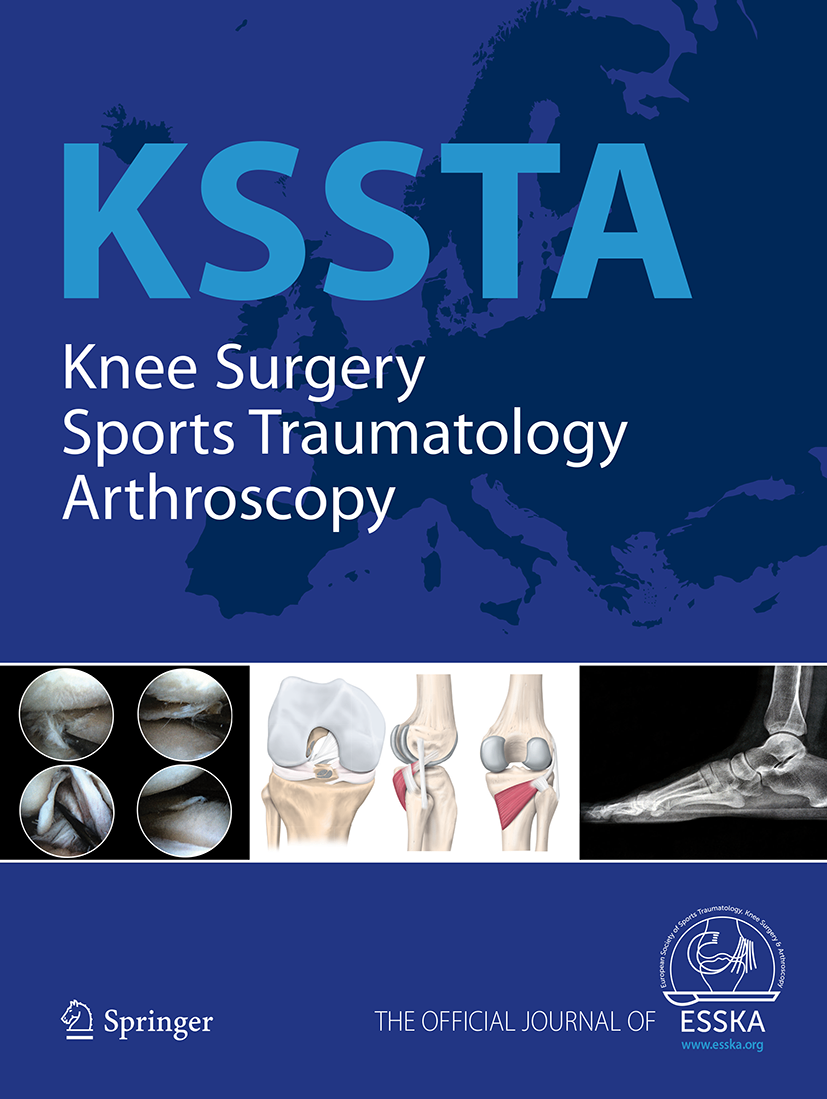
Higher AP laxity with irradiated versus non-irradiated hamstring allograft in DB ACL reconstruction

Higher AP laxity with irradiated versus non-irradiated hamstring allograft in DB ACL reconstruction
Arthroscopic anatomic double-bundle ACL reconstruction using irradiated versus non-irradiated hamstring tendon allograft
Knee Surg Sports Traumatol Arthrosc. 2017 Jan;25(1):251-259Synopsis
112 patients scheduled for unilateral anterior cruciate ligament reconstruction were randomized to have the procedure completed using either a gamma-irradiated hamstring allograft or a non-irradiated hamstring allograft. Patients were assessed over a 5-year follow-up after surgery. Findings demonstrated significantly poorer results for instrumented knee laxity and subjective knee stability tests at 5 years in the irradiated allograft group compared to the non-irradiated allograft group. However, there were no differences in functional and activity outcomes.
Was the allocation sequence adequately generated?
Was allocation adequately concealed?
Blinding Treatment Providers: Was knowledge of the allocated interventions adequately prevented?
Blinding Outcome Assessors: Was knowledge of the allocated interventions adequately prevented?
Blinding Patients: Was knowledge of the allocated interventions adequately prevented?
Was loss to follow-up (missing outcome data) infrequent?
Are reports of the study free of suggestion of selective outcome reporting?
Were outcomes objective, patient-important and assessed in a manner to limit bias (ie. duplicate assessors, Independent assessors)?
Was the sample size sufficiently large to assure a balance of prognosis and sufficiently large number of outcome events?
Was investigator expertise/experience with both treatment and control techniques likely the same (ie.were criteria for surgeon participation/expertise provided)?
Yes = 1
Uncertain = 0.5
Not Relevant = 0
No = 0
The Reporting Criteria Assessment evaluates the transparency with which authors report the methodological and trial characteristics of the trial within the publication. The assessment is divided into five categories which are presented below.
2/4
Randomization
2/4
Outcome Measurements
4/4
Inclusion / Exclusion
3/4
Therapy Description
4/4
Statistics
Detsky AS, Naylor CD, O'Rourke K, McGeer AJ, L'Abbé KA. J Clin Epidemiol. 1992;45:255-65
The Fragility Index is a tool that aids in the interpretation of significant findings, providing a measure of strength for a result. The Fragility Index represents the number of consecutive events that need to be added to a dichotomous outcome to make the finding no longer significant. A small number represents a weaker finding and a large number represents a stronger finding.
Why was this study needed now?
A tear of the anterior cruciate ligament (ACL) is a common sporting injury. Arthroscopic reconstruction of the ACL is often undergone in those who wish to restore knee stability and return to athletic activities. Though traditionally completed using autogenic tissue sources, there has been a recent increase in the use of allografts in ACL reconstruction. Irradiation remains a common method of graft sterilization, though concerns have been expressed about the potential negative impact of gamma irradiation on mechanical properties of the graft.
What was the principal research question?
In double-bundle ACL reconstruction, do gamma-irradiated hamstring tendon allografts result in significantly worse knee stability and clinical scores when compared to non-irradiated hamstring tendon allografts, assessed over a minimum of 5-year follow-up?
What were the important findings?
- Mean instrumented anteroposterior knee laxity at final follow-up was significantly higher in the Ir-Allo group (9.0+/-1.1mm) compared to the Non-Ir-Allo group (5.3+/-1.0mm) (p=0.000).
- The percentage of patients demonstrating side-to-side difference in instrumented AP knee laxity of <3mm was significantly lower in the Ir-Allo group (14/39) compared to the Non-Ir-Allo group (38/44) (p=0.000).
- The percentage of patients demonstrating side-to-side difference in instrumented AP knee laxity of >5mm was significantly higher in the Ir-Allo group (12/39) compared to the Non-Ir-Allo group (4/44) (p=0.000).
- Significant differences between groups at final follow-up were observed for grading of the pivot-shift test (p=0.001), anterior draw test (p=0.000), and Lachman test (p=0.000), with fewer patients in the Ir-Allo group demonstrating negative tests for each when compared to the Non-Ir-Allo group.
- No significant differences in functional outcomes (Overall IKDC, knee ROM, vertical jump, one-legged hop) were observed between groups at final follow-up.
- No significant differences in patient-reported outcome measures (IKDC subjective, Cincinnati knee score, Lysholm, Tegner) were observed between groups at final follow-up.
What should I remember most?
In anatomic double-bundle ACL reconstruction with a hamstring allograft, irradiated allografts demonstrated significantly greater knee instability and laxity, including instrumented AP translation and subjective grading using the Lachman, anterior drawer, and pivot shift test, when compared to non-irradiated allografts over a minimum of 5-year follow-up. However, despite significant differences in measured mechanical outcomes, there was still no difference in clinical outcomes.
How will this affect the care of my patients?
The results of this study suggest that irradiation of hamstring tendon allografts for use in double-bundle ACL reconstruction may result in poorer mid-term knee laxity and stability, and may result in a higher rate of clinical failure when considering thresholds of anteroposterior side-to-side differences in translation. Despite the lack of significant difference in overall functional outcome in the mid-term between irradiated and non-irradiated hamstring tendon allografts, the data on knee stability from the current study appear to identify non-irradiated hamstring tendon allografts as the potential better choice for graft in anatomic double-bundle ACL reconstruction.
Learn about our AI Driven
High Impact Search Feature
Our AI driven High Impact metric calculates the impact an article will have by considering both the publishing journal and the content of the article itself. Built using the latest advances in natural language processing, OE High Impact predicts an article’s future number of citations better than impact factor alone.
Continue



 LOGIN
LOGIN

Join the Conversation
Please Login or Join to leave comments.